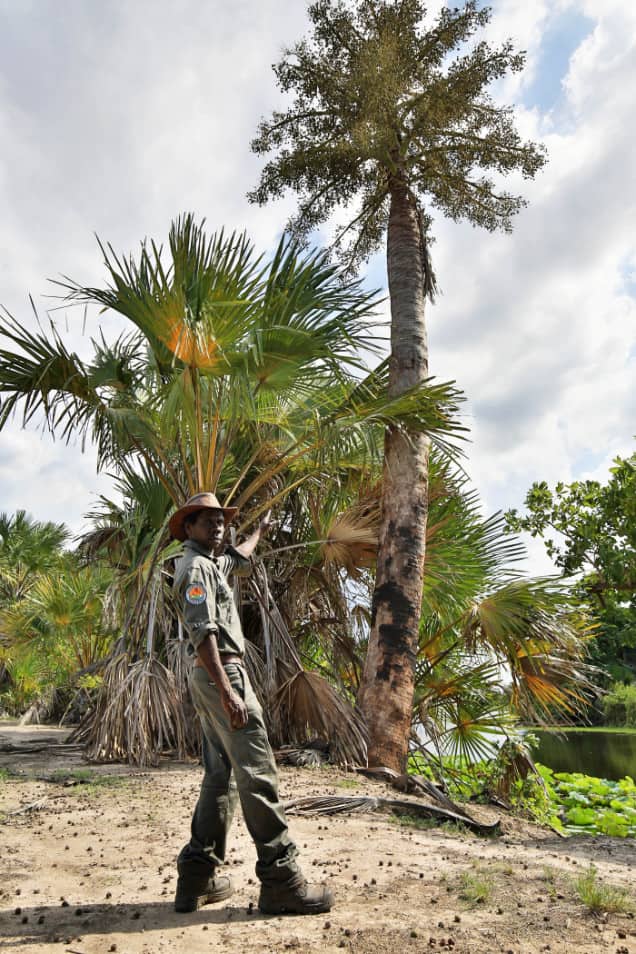Gurruwiling
Gurruwiling, also known as the Arafura Swamp, is a vast, intact, 1000 square kilometre wetland surrounded by a catchment extending from Castlereagh Bay to the upper reaches of the Goyder and Glyde Rivers. It is the largest freshwater ecosystem in Arnhem Land and the largest paperbark swamp in Australia.
Gurruwiling features large areas of paperbark forest, numerous lagoons, grass and sedgeland plains, floating mat communities, sandstone hills, sinkholes, and springs. It is highly unique, with an impervious basement, perennial inflow from springs and no continuous river channel to the sea. The swamp is fringed by extensive woodlands along with numerous patches of rainforest. Most of the catchment is listed on the Register of the National Estate while the central swamp is listed as a Wetland of National Importance.
Gurruwiling is classified as a Key Biodiversity Area and is a major breeding area for Magpie Geese and large numbers of water birds, which occur in internationally significant numbers. Thirty-three threatened species have been recorded from the area and there are several rare vegetation communities including evergreen lowland rainforest and Hanguana malayana swamps. Gurruwiling also contains virtually the entire NT population of the large and distinctive wetland palm Corypha utan and over 3000 hectares of complex monsoon rainforest hosting a large suite of rare and or threatened plants.
Gurruwiling is rich in resources and stories; its grassy plains and networks of lagoons are full of important bush foods including lilies, water chestnuts, Barramundi, Long-necked Turtles and Magpie Geese. It is one of Australia’s foremost strongholds for traditional Aboriginal culture.

Ranger Rexy Djarrkadama pointing out a flowering Corypha utan palm. The Arafura wetlands contain almost the entire NT population of this species. With its massive trunk it is one of Australia’s most imposing palms and it has a spectacular single display of flowering and fruiting before dying.
Healthy Country Plan
We know that the land needs its people to care for it and to keep it healthy. In the same way we know that caring for the country keeps us healthy – physically, spiritually and mentally.